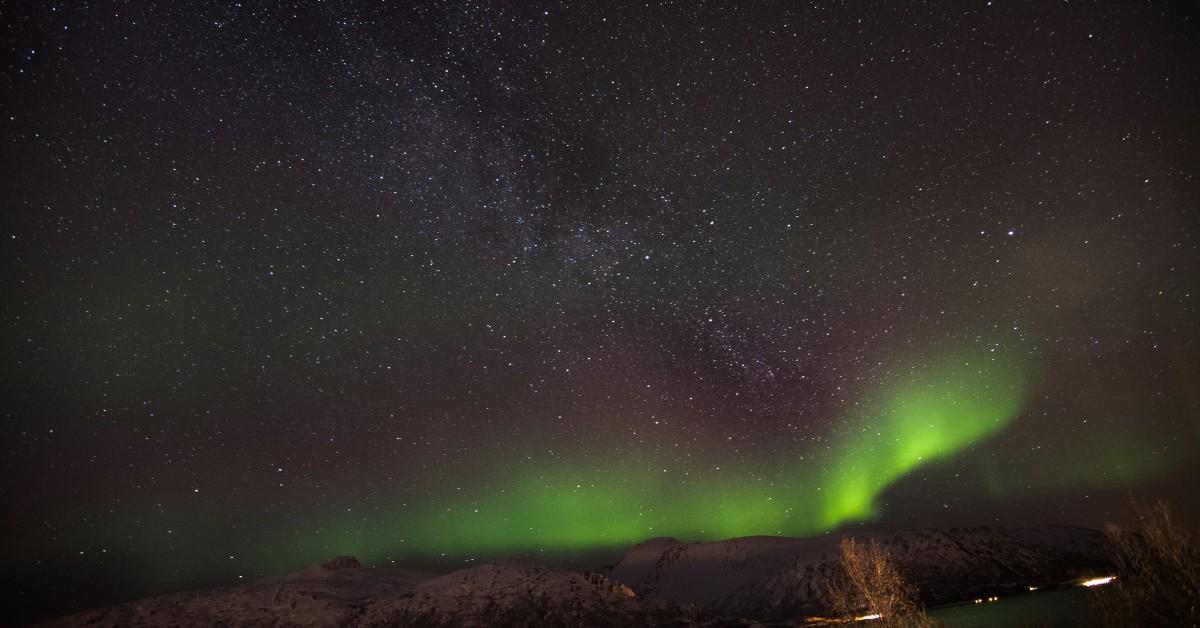A Severe Geomagnetic Storm Is Headed Towards Earth — Here’s What You Need to Know
The storm scale ranges from 1-5, highlighting how intense this storm is.
Published Oct. 10 2024, 11:17 a.m. ET

The beauty of the northern lights will be visible to a larger number of those in the U.S. than usual in October, thanks to a massive solar flare that erupted from the surface of the sun on Oct. 8, 2024, when the sunspot by the name of AR 3848 let an X1.8-class solar flare rip.
The dramatic flare initially knocked out some radios and satellites. Days later, it's expected to create a visually stunning display in the night sky thanks to an accompanying coronal mass ejection.
Keep reading to learn when the G4 geomagnetic storm is expected to hit Earth, and where you need to be to get a glimpse at the magnificent auroras it will undoubtably produce.

The geomagnetic storm is rated "G4," the second highest rating issued by the SWPC.
According to the National Oceanic and Atmospheric Administration's (NOAA) Space Weather Prediction Center (SWPC), the G4 geomagnetic storm has earned a severe rating. The 1-5 ranking system covers geomagnetic storms that produce effects that range from minor to extreme, with the X1.8-class solar flare ranking towards the top of that list.
According to the Space website, X-class flares are some of the strongest flares the sun produces.
These flares aren't to be confused with coronal mass ejections (CMEs), which contain the plasma and magnetic fields ejected from the sun's corona, producing the geomatic storms that create a visible glow in certain areas around the globe. CMEs often happen simultaneously or just after solar flares, according to the EarthSky website.
When is the 2024 solar storm coming to Earth?
The impacts from this storm could cause unstable voltage problems, which could cause power grid disruptions as it makes its way towards Earth beginning around noon on Oct. 10, 2024. NPR explains that while experts do not believe this storm will be worse than a similar storm from May 2024. However, scientists are monitoring the blast to see what effects the Earth can expect, something they should know when the storm is approximately a million miles away.
According to the SWPC's alert, those possible impacts include issues with satellite navigational systems, which could render global positioning systems (GPS) in affected regions useless for hours.
That being said, the news isn't all bad with this geomagnetic storm, since those disruptions are going to be accompanied by a pretty spectacular display in areas that don't typically get to experience the majesty of the northern lights.
This storm may be visible to those living in the southern states, who usually miss out on this type of display. According to CNN, the first wave should arrive around 12 p.m. ET on Oct. 10, 2024. Experts aren't quite sure of the timing or location of the aurora's arrival, but they expect it to stick around through Friday, which means Thursday night could be a colorful one for those in regions where the northern lights will appear.
Of course, with all this activity happening on the sun's surface, many folks may be worried that this is a sign of bigger things to come. NPR explains that the increased flares coming from the sun are just a result of the celestial body reaching the peak of the 11-year cycle that it currently finds itself in and isn't a sign that the sun is becoming more active in her advancing age.